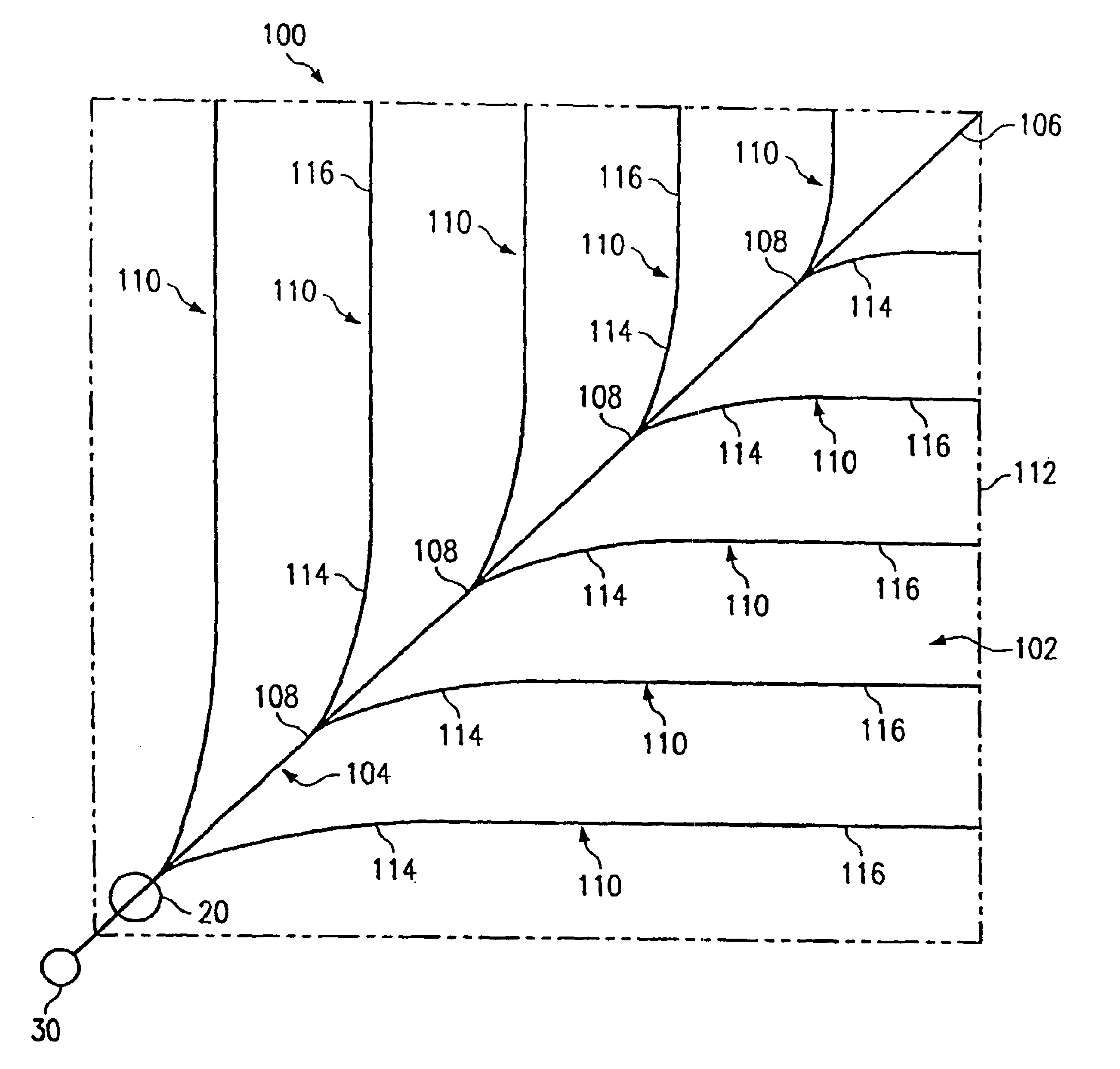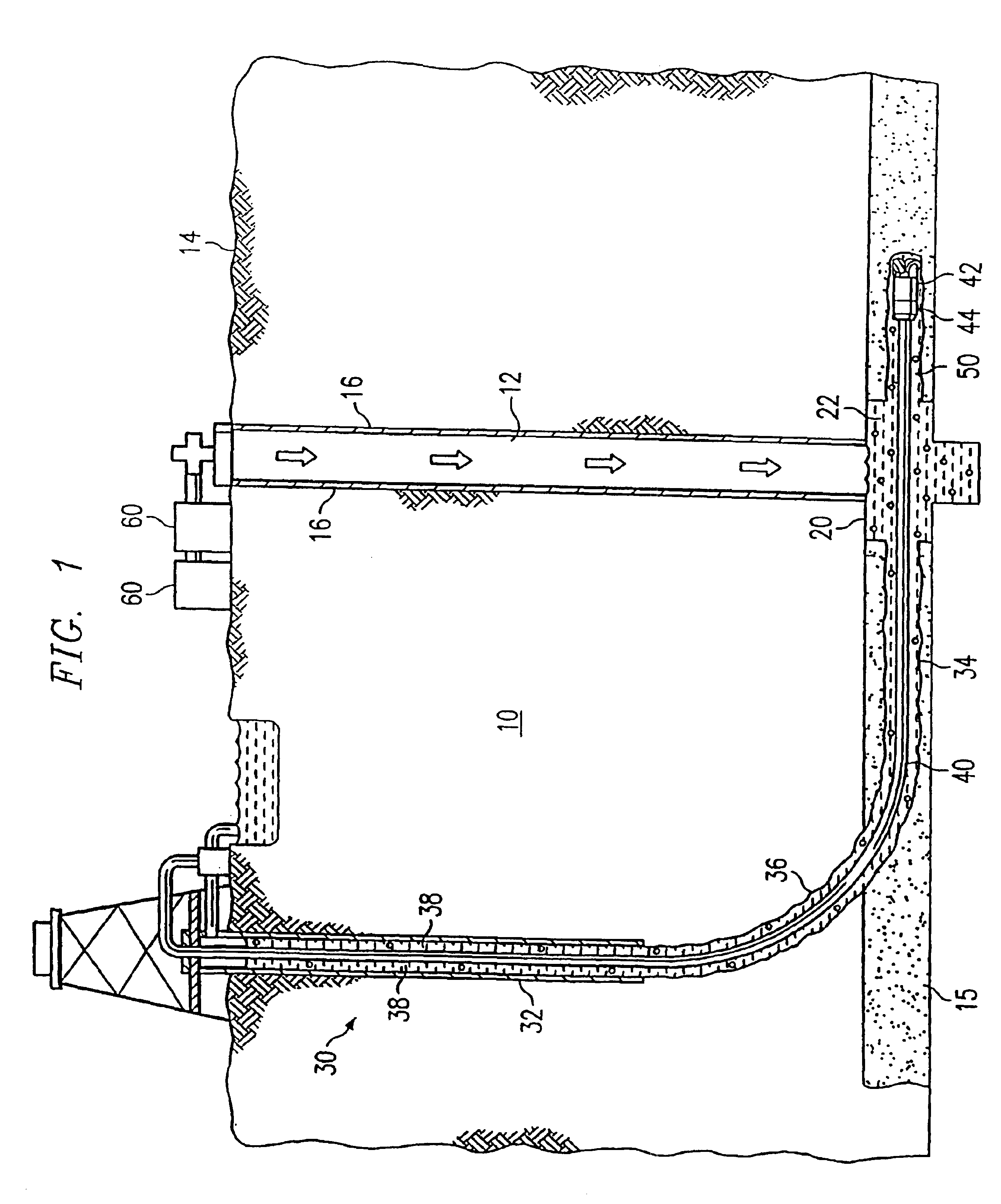Method and system for accessing subterranean deposits from the surface
a technology of subterranean deposits and access methods, which is applied in the direction of survey, directional drilling, borehole/well accessories, etc., can solve the problems of affecting the development and use of methane gas deposits, the distance between vertical wells drilled into coal deposits for obtaining methane gas is relatively small, and the horizontal drainage pattern is not easy to improve, so as to maximize access and maximize the length of laterals.
- Summary
- Abstract
- Description
- Claims
- Application Information
AI Technical Summary
Benefits of technology
Problems solved by technology
Method used
Image
Examples
Embodiment Construction
[0029]FIG. 1 illustrates a cavity and articulated well combination for accessing a subterranean zone from the surface in accordance with one embodiment of the present invention. In this embodiment, the subterranean zone is a coal seam. It will be understood that other low pressure, ultra-low pressure, and low porosity subterranean zones can be similarly accessed using the dual well system of the present invention to remove and / or produce water, hydrocarbons and other fluids in the zone and to treat minerals in the zone prior to mining operations.
[0030]Referring to FIG. 1, a substantially vertical well bore 12 extends from the surface 14 to a target coal seam 15. The substantially vertical well bore 12 intersects, penetrates and continues below the coal seam 15. The substantially vertical well bore is lined with a suitable well casing 16 that terminates at or above the level of the coal seam 15.
[0031]The substantially vertical well bore 12 is logged either during or after drilling in...
PUM
 Login to View More
Login to View More Abstract
Description
Claims
Application Information
 Login to View More
Login to View More - R&D
- Intellectual Property
- Life Sciences
- Materials
- Tech Scout
- Unparalleled Data Quality
- Higher Quality Content
- 60% Fewer Hallucinations
Browse by: Latest US Patents, China's latest patents, Technical Efficacy Thesaurus, Application Domain, Technology Topic, Popular Technical Reports.
© 2025 PatSnap. All rights reserved.Legal|Privacy policy|Modern Slavery Act Transparency Statement|Sitemap|About US| Contact US: help@patsnap.com



